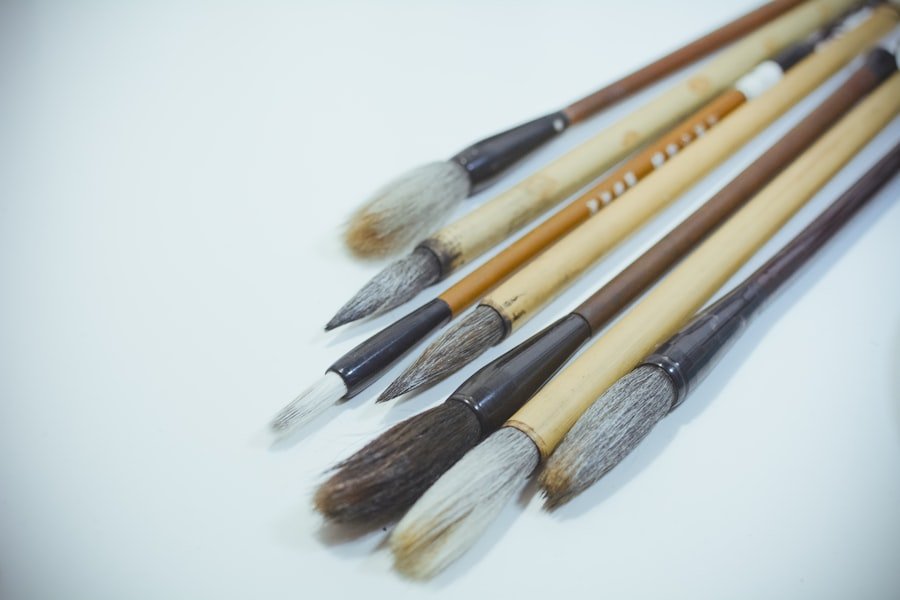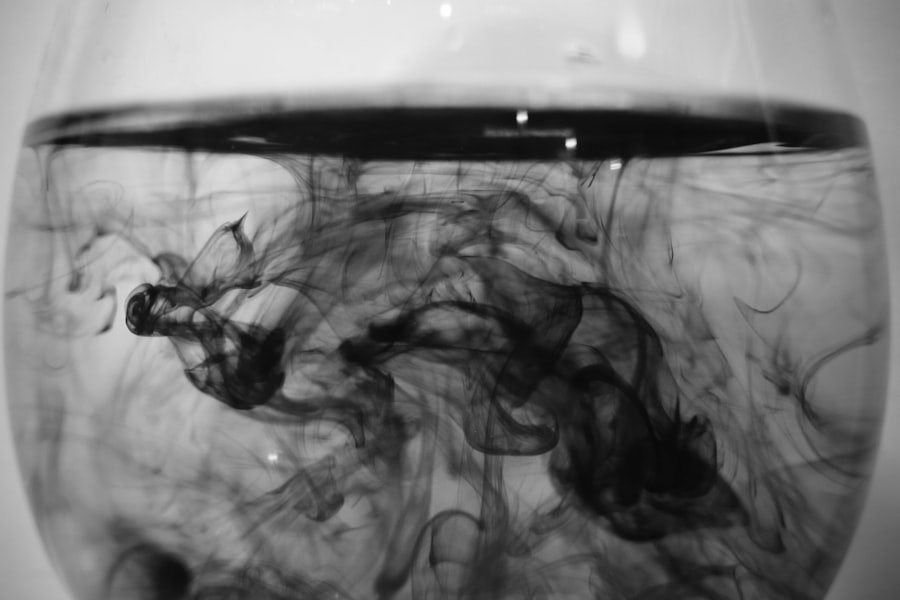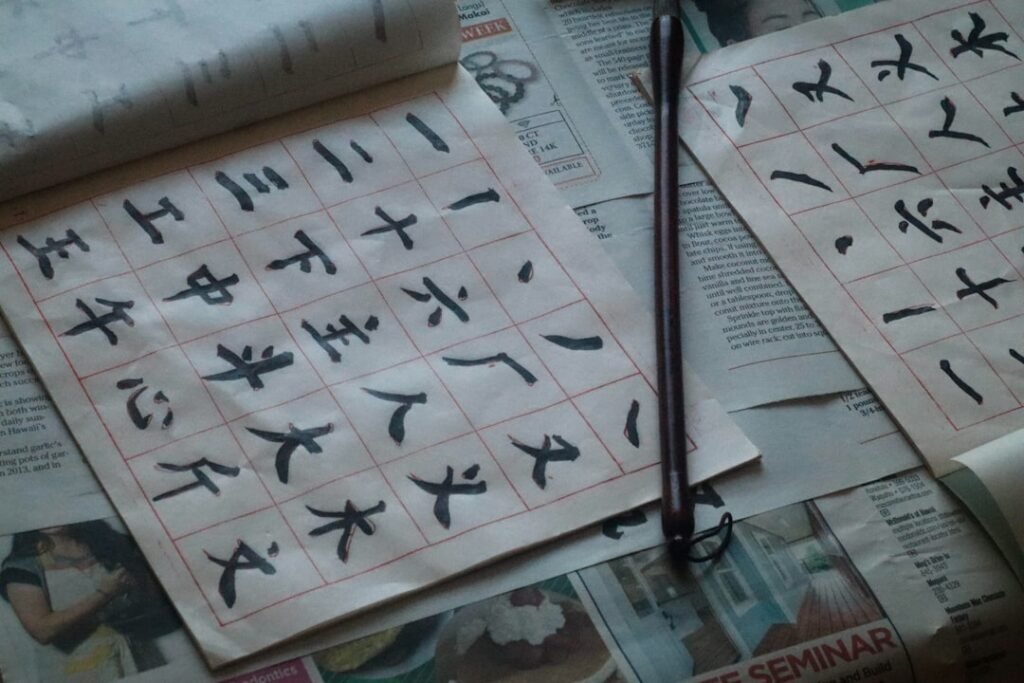Chinese calligraphy is a revered art form that transcends mere writing; it embodies the essence of Chinese culture, philosophy, and aesthetics. Among the various mediums for this exquisite art, fans and lanterns hold a special place. These objects are not only functional but also serve as canvases for artistic expression.
The delicate strokes of calligraphy on the surface of a fan or the gentle curves of a lantern can transform these everyday items into masterpieces that reflect the beauty of the written word. The interplay of ink, brush, and surface creates a unique dialogue that captivates both the artist and the observer. Fans and lanterns have been integral to Chinese culture for centuries, often associated with festivals, celebrations, and traditional ceremonies.
The act of writing calligraphy on these items is not merely decorative; it is a way to convey messages, wishes, and sentiments. Whether it is a poem inscribed on a silk fan or auspicious characters painted on a lantern, the calligraphy serves to enhance the significance of the object. As we delve deeper into the intricacies of this art form, we will explore the challenges and techniques involved in creating beautiful calligraphy on these irregular surfaces. Master the art of Chinese calligraphy. Enroll now at the LC Chinese School in Oslo.
Table of Contents
ToggleSummary
- Chinese calligraphy on fans and lanterns is a unique and beautiful art form that presents its own set of challenges and techniques.
- Understanding the irregular surfaces of fans and lanterns is crucial for creating balanced and harmonious calligraphy designs.
- Techniques for writing on irregular surfaces require patience, precision, and a deep understanding of calligraphy principles.
- Traditional calligraphy materials and tools can be adapted to suit the needs of writing on fans and lanterns, but special considerations must be made for the curved surfaces.
- Balancing composition on curved surfaces is an art in itself, requiring careful planning and an eye for harmonious design.
Understanding the Irregular Surfaces of Fans and Lanterns
The surfaces of fans and lanterns present unique challenges for calligraphers. Unlike traditional flat paper, these objects often feature curves, folds, and varying textures that can complicate the writing process. Fans, for instance, are typically made from materials such as silk or paper stretched over a frame, creating a concave surface that requires careful consideration when applying ink.
Similarly, lanterns may be constructed from paper or fabric that is shaped into a three-dimensional form, demanding an understanding of how to adapt calligraphy to fit its contours. The irregularity of these surfaces can also influence the visual impact of the calligraphy. The way light interacts with the curves of a lantern or the folds of a fan can alter the perception of the written characters.
This dynamic relationship between form and function necessitates a keen awareness of how each stroke will appear from different angles. As artists engage with these surfaces, they must embrace the challenge of adapting their techniques to ensure that their calligraphy remains legible and aesthetically pleasing.
Techniques for Writing on Irregular Surfaces

Writing on irregular surfaces requires a mastery of various techniques that differ from traditional calligraphy practices. One essential technique is adjusting the angle and pressure of the brush to accommodate the curvature of the surface. Calligraphers must develop a keen sense of how to manipulate their tools to achieve consistent strokes while navigating the undulating forms of fans and lanterns.
This often involves practising on similar materials to gain confidence in handling the brush effectively. Another important technique is the use of flexible brush strokes that can adapt to the contours of the surface. Calligraphers may employ a combination of bold and delicate strokes to create contrast and visual interest.
Additionally, understanding how to layer ink can enhance the depth and richness of the characters, allowing them to stand out against the background. By experimenting with different brush techniques and ink applications, artists can discover new ways to express their creativity while honouring the traditions of Chinese calligraphy.
Materials and Tools for Calligraphy on Fans and Lanterns
The choice of materials and tools plays a crucial role in achieving successful calligraphy on fans and lanterns. Traditional Chinese calligraphy requires specific brushes, inks, and papers that are designed to work harmoniously together. For fans and lanterns, artists often select materials that complement the intended design while ensuring durability.
For instance, silk fans may require special inks that adhere well to fabric without bleeding or smudging. In addition to brushes and ink, calligraphers may also utilise various tools such as rulers, stencils, or templates to assist in achieving precise measurements and alignments. These tools can be particularly helpful when working with intricate designs or when aiming for symmetry in characters.
The careful selection of materials not only enhances the quality of the calligraphy but also contributes to the overall aesthetic appeal of the finished piece.
The Art of Balancing Composition on Curved Surfaces
Creating a harmonious composition on curved surfaces is an essential aspect of calligraphy on fans and lanterns. The arrangement of characters must be carefully considered to ensure that they flow naturally with the shape of the object. This requires an understanding of visual balance and proportion, as well as an ability to envision how each character interacts with its surroundings.
Calligraphers often experiment with different layouts before committing to a final design. This may involve sketching out potential compositions on paper or using digital tools to visualise how the characters will appear on the fan or lantern. By considering factors such as spacing, alignment, and overall visual weight, artists can create compositions that are not only aesthetically pleasing but also meaningful in their message.
Challenges of Maintaining Consistency in Stroke Thickness

One of the significant challenges faced by calligraphers when working on irregular surfaces is maintaining consistency in stroke thickness. The curvature of fans and lanterns can lead to variations in pressure applied during writing, resulting in uneven strokes that detract from the overall quality of the calligraphy. To overcome this challenge, artists must develop a steady hand and an acute awareness of how their movements affect the thickness of each stroke.
Practising on similar surfaces can help calligraphers refine their technique and build muscle memory for consistent pressure application. Additionally, some artists may choose to incorporate techniques such as layering or shading to create depth without relying solely on stroke thickness. By embracing these challenges, calligraphers can elevate their work and produce pieces that showcase their skill and artistry.
Adapting Traditional Calligraphy Styles to Irregular Surfaces
Adapting traditional calligraphy styles to fit irregular surfaces requires creativity and innovation. While many calligraphers draw inspiration from classical styles such as Kaishu (regular script) or Xingshu (running script), they must also consider how these styles can be modified to suit the unique characteristics of fans and lanterns. This may involve simplifying certain strokes or altering character proportions to ensure legibility on curved surfaces.
Moreover, artists may experiment with contemporary styles or even create their own unique interpretations that blend traditional elements with modern aesthetics. This fusion allows for greater flexibility in design while still paying homage to the rich history of Chinese calligraphy. By embracing innovation within tradition, calligraphers can create works that resonate with both contemporary audiences and those who appreciate classical art forms.
Incorporating Chinese Symbols and Characters into Fan and Lantern Designs
The incorporation of Chinese symbols and characters into fan and lantern designs adds layers of meaning to these objects. Calligraphers often choose auspicious characters or phrases that convey good fortune, happiness, or wisdom, enhancing the cultural significance of their work. For instance, characters such as “福” (fu – fortune) or “喜” (xi – joy) are commonly used in festive decorations.
In addition to standalone characters, artists may also integrate poetic verses or proverbs into their designs, creating a narrative that unfolds through the written word. This approach not only beautifies the fan or lantern but also invites viewers to engage with the deeper meanings behind each character. By thoughtfully selecting symbols and phrases, calligraphers can create pieces that resonate emotionally with those who encounter them.
Preserving the Integrity of Calligraphy on Foldable Fans
Foldable fans present unique challenges for calligraphers due to their design and functionality. The folding mechanism can create creases that disrupt the smooth surface needed for writing, making it essential for artists to consider how their calligraphy will be affected by these folds. To preserve the integrity of their work, calligraphers often plan their designs around these creases, ensuring that characters remain legible even when the fan is opened or closed.
Additionally, protective measures such as using fixatives or varnishes can help safeguard against smudging or fading over time. By taking these precautions, artists can ensure that their calligraphy retains its beauty and significance long after it has been created.
Exploring the Role of Calligraphy in Chinese Fan and Lantern Culture
Calligraphy plays a vital role in Chinese fan and lantern culture, serving as a bridge between art and tradition. Historically, fans were not only practical tools for cooling but also symbols of status and refinement among scholars and literati. The presence of calligraphy on these fans elevated their status further, transforming them into objects of artistic expression that conveyed personal philosophies or poetic sentiments.
Similarly, lanterns have long been associated with festivals such as the Lantern Festival, where illuminated designs often feature intricate calligraphy celebrating themes of reunion and joy. The act of writing on these objects connects individuals with their cultural heritage while fostering a sense of community during celebrations. As such, calligraphy remains an integral part of both fan and lantern culture, enriching their significance within Chinese society.
Embracing the Unique Challenges and Beauty of Calligraphy on Fans and Lanterns
In conclusion, Chinese calligraphy on fans and lanterns represents a beautiful fusion of art, culture, and tradition. The unique challenges posed by irregular surfaces inspire creativity and innovation among artists as they adapt their techniques to suit these forms. From mastering brush strokes to balancing composition, each aspect contributes to the overall beauty of the finished piece.
At LC Chinese School in Oslo, we offer specialised courses in Chinese calligraphy that focus on these very techniques used for fans and lanterns. Our experienced instructors guide students through every step of this intricate art form, helping them develop their skills while appreciating its cultural significance. Whether you are a beginner or an experienced artist looking to refine your craft, our courses provide an enriching environment where you can explore the beauty of Chinese calligraphy in all its forms.
Embrace this opportunity to delve into an art form that not only enhances your creative expression but also connects you with centuries-old traditions. Join us at LC Chinese School in Oslo as we celebrate the unique challenges and beauty inherent in Chinese calligraphy on fans and lanterns!
Master the art of Chinese calligraphy. Enroll now at the LC Chinese School in Oslo.







